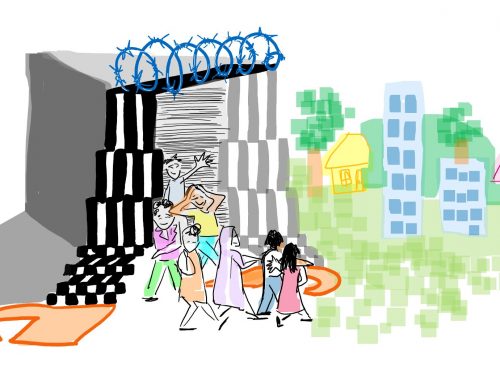22 July 2016
UK’s National Preventive Mechanism calls for a time limit on immigration detention
UK’s official detention watchdog has confirmed that it supports the view that there should be a time limit over immigration detention. HM Chief Inspector of Prisons for England and Wales Annual Report 2015–16, published recently, explains that this official position was formally endorsed by the UK’s National Preventive Mechanism in November 2015.
The National Preventive Mechanism is designated by the states which have signed the treaty, the Optional Protocol to the Convention Against Torture and other Cruel, Inhuman or Degrading Treatment or Punishment (OPCAT). Through regular, independent monitoring of places of detention, the NPM aims to provide a safeguard against torture and ill-treatment that could happen in detention.
The National Preventive Mechanism, and also HMIP by implication, join a number of national and international bodies who have called for a time limit on immigration detention over the years. The Equality and Human Rights Commission, the United Nation’s Committee against Torture and European Committee for the Prevention of Torture and some of the Independent Monitoring Boards have repeatedly expressed their grave concern over UK’s routine practice long-term deprivation of liberty of irregular migrants and have called for a time limit.
The issue of a time limit was also one of the key themes which emerged from a number of critical reports, including the report of the Parliamentary Inquiry into the Use of Immigration Detention and the Home Office commissioned Review into the Welfare in Detention of Vulnerable Persons.
UK detains around 4,000 people with irregular migration status on any given day. There are nine detention centres (Immigration Removal Centres) and several Short Term Holding Facilities in the UK where such individuals are locked up. In addition, around 400 irregular migrants are also held in prisons, with less access to legal advice and other support than in detention centres.
Other concerns highlighted by the annual report 2015/16 include:
– Better outcomes are observed in smaller facilities, such as Tinsley and Dungavel. Larger facilities inspected ‘tend to be less safe and respectful’;
– A safeguarding mechanism for people who are ill, victims of torture or trafficking (Rule 35) was not functioning properly in any of the facilities inspected. This meant that the most vulnerable were not afforded protection they desperately needed;
– There was no adequate safeguarding procedures in Yarl’s Wood detention centre, particularly for those who are vulnerable. While in the past, there were ‘proven instances of inappropriate sexual relationships between staff and detainees which, given the power imbalance and vulnerability of detained women, were clearly abusive’, their latest inspection found ‘no evidence of a current widespread abusive or hostile culture among staff’;
– Staff members were generally respectful to those who are detained in the centres;
– Accommodation and infrastructure remained ‘prison-like’.
In one of the most shocking cases, in summer 2015 HMIP discovered by chance a previously unknown detention facility operating in Dover during their regular inspection of other Short Term Holding Facilities in the area. Men, women and children who have just arrived in the UK were detained in so-called ‘Longport Freight Shed’, the unofficial detention facility, which had unacceptably poor conditions without sufficient food. According to the report, this facility is currently not being used and HMIP recommends the facility to be closed down permanently.
You can read the report here.




